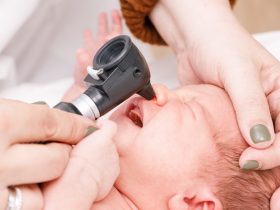Testosterone plays a crucial role in maintaining bone health, influencing both bone density and overall skeletal integrity. This hormone, predominantly known for its role in male sexual development and function, also has significant implications for bone metabolism.
The Biological Functions of Testosterone
Testosterone contributes to the growth and strength of bones by stimulating the production of bone-forming cells and slowing the activity of cells that break down bone tissue. It also enhances the absorption of calcium, a vital mineral for bone health.
How Testosterone Affects Bone Density
Higher levels of testosterone are associated with increased bone density and reduced risk of fractures. This is particularly important in older adults, where natural declines in testosterone can lead to weakened bones and increased susceptibility to osteoporosis.
Testosterone Deficiency and Bone Health
A deficiency in testosterone can lead to decreased bone density and an increased risk of osteoporosis. Monitoring and managing testosterone levels can be a key strategy in preventing bone health issues, especially in aging populations.
Risk Factors for Low Testosterone and Osteoporosis
Understanding the factors that contribute to low testosterone and osteoporosis is crucial for prevention and management. These risk factors are often interconnected, influencing both hormonal balance and bone health.
Age-Related Decline in Hormone Levels
As individuals age, there is a natural decline in hormone levels, including testosterone, which can significantly impact bone density. This gradual decrease can lead to increased risks of osteoporosis, particularly in men over the age of 50.
Lifestyle and Environmental Factors
Various lifestyle choices and environmental exposures can also affect testosterone levels and bone health. Key factors include:
- Poor diet lacking in essential nutrients
- Lack of physical activity which is vital for maintaining bone density
- Excessive alcohol consumption and smoking
- Exposure to environmental toxins and stress
Genetic Predispositions
Genetic factors play a significant role in an individual’s risk of developing low testosterone and osteoporosis. Certain genetic markers can predispose individuals to hormone imbalances and weaker bones, making them more susceptible to these conditions.
Symptoms and Early Detection of Osteoporosis
Identifying Early Signs of Bone Density Loss
Early detection of osteoporosis is crucial for effective management and treatment. Common early signs include a reduction in height, sudden back pain, and fractures that occur with minimal trauma. Regular check-ups and being aware of these signs can lead to early diagnosis and a better prognosis.
The Impact of Testosterone on Early Osteoporosis Symptoms
Testosterone plays a significant role in maintaining bone density. Low levels of testosterone can accelerate bone density loss, making early osteoporosis symptoms more pronounced. This connection underscores the importance of monitoring hormone levels as part of osteoporosis management.
Screening and Diagnostic Tools
A variety of tools are available for the early detection of osteoporosis. Dual-energy X-ray absorptiometry (DEXA) scans are the gold standard for measuring bone density. Other tools include ultrasound and quantitative computed tomography. Regular screenings can help catch the disease in its early stages, allowing for timely intervention.
Preventive Strategies to Enhance Bone Density
Dietary Recommendations and Supplements
A balanced diet rich in calcium and vitamin D is crucial for maintaining healthy bones. Foods such as dairy products, green leafy vegetables, and fish can provide necessary nutrients. Additionally, supplements may be recommended to ensure adequate intake, especially for those with dietary restrictions.
Exercise Programs Targeting Bone Strength
Regular physical activity, particularly weight-bearing exercises like walking, jogging, and strength training, is essential for building and maintaining bone density. Tailored exercise programs can help individuals at various fitness levels improve their bone health.
Hormone Replacement Therapy
For those at high risk of osteoporosis, hormone replacement therapy (HRT) may be considered. This involves the administration of medications that can help maintain bone density and reduce the risk of fractures. It’s important to discuss the benefits and risks of HRT with a healthcare provider to make an informed decision.
Current Research on Testosterone Therapy for Osteoporosis
Recent Studies and Findings
Recent studies have shown promising results in the use of testosterone therapy for improving bone density in individuals at risk of osteoporosis. Key findings include significant improvements in bone mineral density and reductions in fracture rates among participants receiving testosterone supplements.
Long-term Effects of Testosterone Treatment
The long-term effects of testosterone treatment on bone health are still under investigation. However, preliminary data suggest that sustained testosterone therapy may not only prevent further bone degradation but could potentially reverse some of the damage caused by osteoporosis.
Comparative Analysis with Other Treatments
When compared to other osteoporosis treatments, testosterone therapy has been found to be particularly effective for men with low hormone levels due to hypogonadism or age-related declines. It is often considered alongside calcium supplements, vitamin D, and bisphosphonates as part of a comprehensive treatment plan.
Challenges and Considerations in Treatment
While testosterone therapy offers promising benefits for treating osteoporosis, it comes with its own set of challenges and considerations that must be carefully managed.
Potential Side Effects of Testosterone Therapy
Testosterone therapy can lead to various side effects, which may include acne, sleep apnea, and an increased risk of cardiovascular diseases. Physicians must weigh these potential risks against the benefits when prescribing this treatment.
Balancing Hormone Levels
Achieving the right balance of hormone levels is crucial. Too much testosterone can lead to complications such as erythrocytosis, while too little may not effectively combat bone density loss. Regular monitoring and adjustments are essential for optimal treatment outcomes.
Patient Compliance and Monitoring
Ensuring patient compliance is a significant challenge. Patients must adhere to the prescribed therapy regimen and attend regular follow-up appointments to monitor progress and adjust treatment as necessary. Effective communication and patient education are key factors in enhancing compliance and treatment success.
Case Studies and Real-life Success Stories
Individual Experiences with Testosterone Therapy
Testosterone therapy has been a transformative approach for many individuals struggling with osteoporosis. Case studies highlight the significant improvement in bone density and overall quality of life following the commencement of therapy. Patients often report reduced instances of fractures and enhanced physical activity.
Impact on Lifestyle and Well-being
The positive effects of testosterone therapy extend beyond physical health, influencing various aspects of lifestyle and well-being. Improved bone strength often correlates with increased energy levels and better mood, contributing to a more active and fulfilling life.
Long-term Outcomes and Follow-ups
Long-term follow-ups in case studies reveal sustained benefits and the importance of continuous monitoring. While most patients maintain improved bone density, the studies also discuss the necessity for ongoing treatment to manage osteoporosis effectively.








